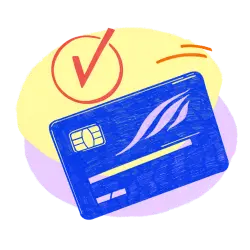
Managing chargebacks and reducing your chargeback rate (also known as chargeback ratio) is one of the most challenging elements in running a business. A chargeback occurs when a cardholder requests a refund from their card issuer, resulting in a penalty fee against your business’s merchant account. This can happen because of credit card fraud, business fraud, return policy disputes, and general mistakes.
Regardless, keeping chargebacks to a minimum is essential if you want to avoid problems with your merchant account. As credit card transactions now outweigh cash transactions, a merchant account in good standing is more essential than ever.
Understanding your chargeback rate and how to keep it low is critical to the success of your business. In this blog, we take a close look at chargeback ratios.
What Is Chargeback Rate?
A chargeback rate, or chargeback ratio, is a calculation of the percentage of your business transactions that result in a chargeback. Card networks and merchant account providers use chargeback ratios to determine your business’s risk level. If your chargeback ratio is high, this may indicate that:
- Fraudulent goods or services are being sold
- Customer details aren’t thoroughly checked correctly, leading businesses to be susceptible to fraud
- Good business practices aren’t being followed
Considering that some projections believe that credit card fraud will cost businesses and other stakeholders more than $400b in the next decade,[1] Tokenex. “The Cost of Credit Card Fraud“. Accessed November 17, 2023. it’s no wonder that your chargeback rate is important to merchant account providers and card networks.
What are the average chargeback rates by industry?
Your chargeback ratio can vary significantly depending on your industry and the type of business you operate. Typically, processing banks will allow a maximum chargeback ratio of 1%. Some online shops might be more susceptible to specific types of credit card fraud if card-not-present transactions are allowed.
Additionally, some industries are more likely to be the target of credit card fraud. For example, electronics, jewelry, and other high-ticket items can be the target of fraudsters.
So, what are the average chargeback rates for each industry? While it’s difficult to pin exact numbers on chargeback ratios, Clear Sale conducted a study that shed some light on estimated chargeback rates by industry. Let’s check them out below:
- Overall average chargeback ratio – 0.6%
- Gaming – 0.43%
- Travel – 0.5%
- Retail – 0.5%
- Media & eContent – 0.56%
- Financial services – 0.65%
- Software – 0.66%
Also, you can infer that some industries will naturally have higher chargeback rates as they are considered “high-risk” by merchant account providers. Let’s explore some of these high-risk industries below:
- Adult Industry
- Bail Bonds
- CBD
- Tech Support
- Guns and Firearms
- More
What Is an Acceptable Chargeback Ratio?
While you should always strive to keep your chargeback ratio as low as possible, you might be wondering: How many chargebacks are you allowed?
While many merchants believe that 1% is an acceptable rate, this isn’t always true. Acceptable chargeback rates depend on the card network.
For example, Visa’s acceptance rate is 0.9%, but you will receive an “Early Warning” if you reach 0.65%. If you reach 1.8%, you have entered the “Excessive” category.
On the other hand, for Mastercard, you need to maintain a ratio below 1%. When you reach 1.5% over two months, you will be deemed an “Exessive Chargeback Merchant.”
How to Calculate Chargeback Rate for Your Business
Calculating your chargeback rate is simple – all you need is the number of transactions, number of chargebacks, and some simple math!
Below is the basic equation for chargeback ratios:
Number of Chargebacks / Number of Transactions = Chargeback Ratio
Divide the number of chargebacks by the number of total transactions (for a given period). In most cases, your chargeback rate is calculated on a monthly basis.
How do credit card companies calculate chargeback ratios?
Each credit card company or network (such as Visa, Mastercard, and American Express), will only calculate your chargeback ratio for transactions that occur with their cards. For example, a chargeback from a Mastercard cardholder will not impact your chargeback ratio with Visa.
Let’s explore if there are any variations in the way that chargeback ratios are calculated by the leading card networks:
Visa
Visa calculates your chargeback ratio on a monthly basis. Let’s explore the equation below:
Number of Visa Chargebacks During the Current Month / Number of Visa Transactions During the Current Month = Visa Chargeback Ratio
Mastercard
While Mastercard’s method for calculating chargeback ratios is similar, there is one critical variation. Instead of dividing your current month’s chargebacks by your current month’s transactions, Mastercard will divide your current month’s chargebacks by the number of your previous month’s transactions. Check out the formula below:
Number of Mastercard Chargebacks During the Current Month / Number of Mastercard Transactions During the Previous Month = Mastercard Chargeback Ratio
Factors that Impact Chargeback Ratios
It’s not only card networks that can influence your chargeback ratio acceptability. Acquiring banks, merchant account providers, and other stakeholders in transactions may also have their own standards.
What Happens if You Have a High Chargeback Rate?
If you find yourself in the unlucky position of having a high chargeback rate, the consequences can be severe. In many cases, you will have to enter into a chargeback program, which is reserved for merchants that are “high-risk” according to their chargeback ratios.
While the specifics of each card network and acquiring bank’s chargeback program vary, one factor is certain – it will be expensive for your business.
For example, Visa may begin charging up to $100 per chargeback if you’re in an excessive chargeback band. Mastercard will impose additional reporting requirements on your acquiring bank, which can cost $100s per month – and potentially $1000s if you don’t follow the reporting guidelines strictly. While these fees are charged to your acquirer by Mastercard and Visa, you will need to cover the costs.
Also, an excessive chargeback ratio can result in your funds being held as a deposit, which can reduce your access to working capital. As well as your business being placed on the TMF/MATCH list.
As you can already tell, once you reach high-risk status with card networks and acquirers, it can cause serious damage to your business. If you run a small business, surviving the excessive chargeback categorization can be difficult, but chargeback prevention is necessary to operate your business successfully.
How to Dispute Chargebacks
If you receive a chargeback that you suspect is invalid, you may want to dispute it. For example, suppose a customer has filed a chargeback because they wanted to return a product outside of your return policy deadline but were unable to. In that case, you can file a dispute to prove that your privacy policies prevented the refund.
First, it’s always important to collect customer data to ensure that you have evidence of a transaction and its relevant details in the case of a dispute.
Once your acquirer notifies you that a customer is filing a chargeback, they will tell you how long you must submit a dispute.
Next, gather all the transaction data and write your dispute, outlining the evidence that the chargeback is invalid. For example, if it’s due to a dispute over a product return, outline your policy and evidence that your business communicated your policy to the customer, which you can use as proof that the chargeback is false.
Make sure to submit all relevant information before the deadline provided by your acquirer.
Unfortunately, some payment service providers and merchant account companies may still charge you a chargeback fee, even if your dispute is successful. This is why it’s essential to avoid chargebacks at all costs.
Still, disputing a chargeback can be worth it. While the chargeback success rate is around 68%, this means that 32% of merchants that dispute chargebacks are successful in doing so.[2] Chargebacks 911. “2021 Chargeback Field Report“. Accessed June 9, 2022.
8 Tips to Help Reduce a Chargeback Ratio
Fortunately, many chargebacks can be avoided by implementing good business practices. Below, we look at six steps you can take to reduce your chargeback ratio and avoid trouble with your merchant account:
1. Follow credit card network protocols

Make sure to ask each credit card network for their protocols and follow them closely. Card networks will want to know if you followed the correct protocols if they assess your chargeback ratio.
Following these protocols isn’t only useful because it covers your bases; the protocols truly work. Card networks have a vested interest in keeping your chargeback ratio low to avoid losing money and help keep you and your customers safe.
2. Use fraud prevention tools
While credit card transactions open businesses up to a variety of fraud issues, there are plenty of tools that offer recourse. Many fraud prevention tools can help you verify the correct cardholder is conducting a transaction.
Some tools can verify addresses, cardholder IDs, and various other data points to ensure the transaction is valid. Take advantage of these tools.
Merchant service providers can recommend reliable chargeback protection software for your business.
3. Make communicating with customers a priority
Communication is vital in preventing unwanted chargebacks. If you make it easy for customers to contact you, they are much less likely to grow frustrated and submit a chargeback over a misunderstanding.
List your communication details clearly on your website. Ensure there are enough staff members to reply to customer requests in a timely fashion.
Also, make sure to communicate shipping dates and other details that will prevent a customer from thinking you didn’t deliver your products.
4. Utilize clear billing descriptors
Make sure your bills clearly show your contact details and charges for all related goods or services. It should not be difficult for your customers to understand their bills or know who to contact if they need to raise a concern.
5. Request authorization frequently
Make sure to request authorization using the correct authorization codes. This can help avoid future confusion about a transaction’s authorization.
6. Process refunds quickly
Lastly, make sure your business is processing refunds as quickly as possible. If a customer meets your refund requirements, there’s no need to delay payment. Frustrated customers may submit a chargeback called “friendly fraud” instead of requesting a refund.
While some credit card refunds take a few days to process, ensure that this is communicated to your customer. You don’t want confusion to result in an unnecessary chargeback.
7. Clearly state your policies
You need to clearly state shipping and return policies on your website or in your advertising material. Clearly defining your policies can help you avoid any uncertainties in the case of a dispute.
Similarly, make sure to inspect your advertising for any false claims. If you advertise a product that does not function as described, a customer may have the right to file a chargeback.
It should never be difficult for a customer to find your policies.
8. Use your trading name for credit card transactions
Many chargebacks arise because customers don’t recognize business names on their statements. Make sure to use your trading name for credit card payments – a customer might not know your parent company name, which can result in chargebacks.
Certain industries may want a specific dynamic descriptor, in this case, you will need to clearly outline this in your terms of use, in order to avoid any issues.
Understanding Chargeback Rates: Closing Thoughts
Now that you understand chargeback rates and why they are so essential to managing, it’s time to put our advice into action. Keeping your chargebacks as low as possible can prevent unnecessary monetary losses.
If you find yourself with a high chargeback rate, it’s worth considering a merchant service provider specializing in chargeback prevention because they can understand the unique needs of their merchants.






